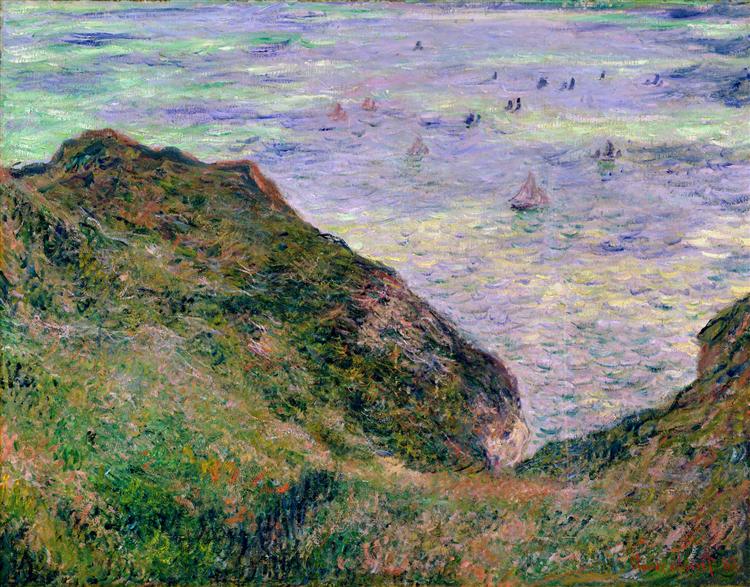Description
Claude Monet's 1882 painting View Over the Sea stands as a prime testament to the French master's Impressionist approach, known for his ability to capture light and atmosphere in his landscapes. This painting, like many of Monet's others, reflects his interest in variations in visual perception, a defining characteristic of the Impressionist movement that helped revolutionize art in the 19th century.
In View Over the Sea, Monet focuses on the sea, which not only becomes the primary subject but also the medium through which he explores the interplay of light, the water's surface, and the sky. The composition is dominated by broad areas of blue and green, representing the vastness of the ocean beneath a sunlit sky. This use of the color palette evokes a sense of serenity and, at the same time, movement. The gentle waves of the sea are suggested by dynamic brushstrokes, which capture the ebb and flow of the water and the vibration of the light reflected on its surface. Monet demonstrates an impressive mastery of the loose, rapid brushstroke technique that is emblematic of Impressionism, allowing the work to convey both the essence of the moment and the immediacy of nature.
A notable aspect of the work is the way Monet suggests the presence of the coastline in the distance, an indication of his skillful use of perspective. The horizon line, subtle but evident, connects the sky and the sea, while the treatment of the sky, with its fluffy, electric clouds, seems to vibrate with an almost palpable energy. There are no human figures in the composition, which foregrounds nature and its majesty, allowing the viewer to become completely immersed in the landscape. This absence of characters can be interpreted as an invitation to meditate on the immensity of the natural environment and the human relationship to it.
Monet, in this work, often makes use of the technique of splitting colour, where small touches of different hues visually blend together when viewed from a distance. This effect can be seen in the way he has applied greens and blues to the sea, conveying movement and reflections that seem to change with the light. The carefree style and almost ethereal depiction of the sea in View Over the Sea anticipate Monet's later explorations in more monumental works, such as his famous Water Lilies series.
The period from 1880 to 1890 was a pivotal one for Monet, where he experimented and pushed the boundaries of Impressionism, focusing on the capture of the moment and the transience of light. View Over the Sea embodies many of these ideals, becoming a significant example of his artistic quest. Although not one of Monet's best-known works, its subtle beauty and masterful technique place it firmly in the canon of Impressionist art, resonating with the same vitality that characterized his entire output.
In conclusion, View Over the Sea is a contemplative painting, a reflection of Monet's mastery in interpreting nature with a sensitivity that transcends mere landscape. At its core, the work reaffirms the power of Impressionism to capture not only the appearance of the world, but also its emotional experience, offering a window into Monet's deep connection with the environment that surrounded him.
KUADROS ©, a famous painting on your wall.
Hand-made oil painting reproductions, with the quality of professional artists and the distinctive seal of KUADROS ©.
Painting reproduction service with satisfaction guarantee. If you are not completely satisfied with the replica of your painting, we will refund 100% of your money.

